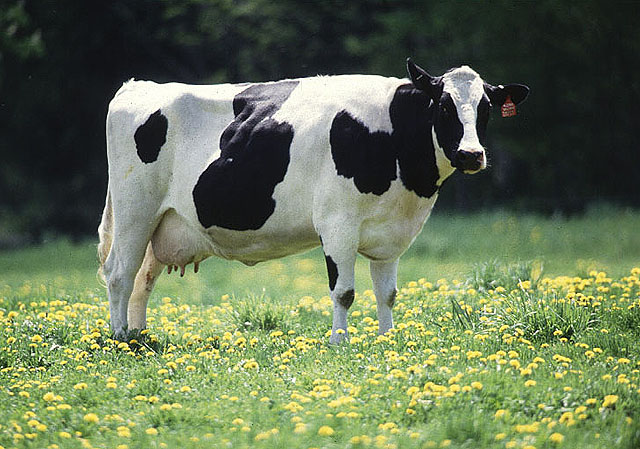Antibodies that have been derived from the immune cells of cows are just a third of the size of antibodies derived from the immune cells of camelids. In fact, the bovine antibodies are so diminutive, they are only twice the size of cyclosporine, a conventional therapeutic macrocycle.
With antibodies, smallness has its advantages. For example, small antibodies can move through tight spaces and reach tissue sites that would be inaccessible to large antibodies. Also, small antibodies can nimbly seize antigens that large antibodies would fumble.
The new, extra-small bovine-derived antibodies are actually antibody fragments called knob domains. They have been produced by researchers at the University of Bath and UCB, a biopharma company. According to these researchers, the knob domains are cysteine-rich structures that come from the bovine antibodies’ ultralong complementarity-determining regions (CDRs).
Additional details appeared in the journal PLOS Biology, in an article titled, “Isolation of antigen-specific, disulphide-rich knob domain peptides from bovine antibodies.”
“We show for the first time that isolated bovine antibody knob domains can function as autonomous entities by binding antigen outside the confines of the antibody scaffold,” the article’s authors wrote. “This yields antibody fragments so small as to be considered peptides, each stabilized by an intricate, bespoke arrangement of disulfide bonds.”
Until now, the smallest manmade antibodies (known as monoclonal antibodies, or mAbs) were derived from llamas, alpacas, and sharks, but the new knob domains are considerably smaller. In addition, they possess an abundance of disulfide bonds that may confer improved drug-like properties and render them especially suited for therapeutic applications.
“These knobs are able to bind their target as complete antibodies,” asserted Jean van den Elsen, PhD, a professor of biology and biochemistry at the University of Bath and a co-author of the current study. “In effect, we have been able to miniaturize antibodies for the first time.”

“Most peptides are currently derived by phage display or combinatorial chemistry methods,” the scientists continued. “[But] the approach described herein is unique in exploiting the bovine immune system to enable affinity maturation and derive peptides with complex networks of disulfide bonds.”
Antibodies consist of chains of amino acids (the building blocks of proteins) that join together in a loopy structure. The loops in the chains, known as complementarity determining regions, bind to antigen targets, thereby activating the immune system. Bovine antibodies are loopier than most, and around 10% include a knob domain—a characteristic that is unique among jawed vertebrates. These tightly packed bundles of mini loops are presented on a protein stalk, far from other loops, and are thought to play a critical role in binding.
The reason knob domains are creating a stir is simple: isolated from the rest of the antibody, these loop extensions can function autonomously, effectively making tiny antibodies that can bind tightly to their targets.
These new molecules originate from cows that have been immunized by injection with an antigen (particles of a foreign body), eliciting an immune response. Natural antibodies are mined from the cow, through a process of sorting and “deep sequencing” of antibody producing B-cells. The resulting antibodies are then manufactured in the lab in cultures of human cells.
Regular antibodies are made by the human body as part of its natural response to an infection, whereas monoclonal antibodies are administered to a patient when an infection has taken hold and they are struggling to beat it unaided. Over the past few decades, mAbs have emerged as effective treatments for various medical conditions, including cancers, autoimmune disorders, and serious viral infections. It is hoped that miniaturized mAbs will eventually be involved in a range of drug therapies.
The antigen used by the Bath researchers to elicit an immune response in cows is called Complement component C5, and C5 plays a role in many human diseases (including COVID-19), where there is an inflammatory response.
Not only do these novel monoclonal antibodies have a size advantage over regular mAbs but they are also more robust, meaning they remain stable for longer.
“They have very sturdy, tightly packed structures,” said van den Elsen. “So not only do they get to places better than other antibodies but they may also have a far longer shelf life.”
Alex Macpherson, a PhD student at Bath and a biochemist at UCB, who is lead author on the paper, added: “Antibody drug discovery is an established field, but this research opens up entirely new opportunities. There is a huge potential use for these miniaturized antibodies.”


